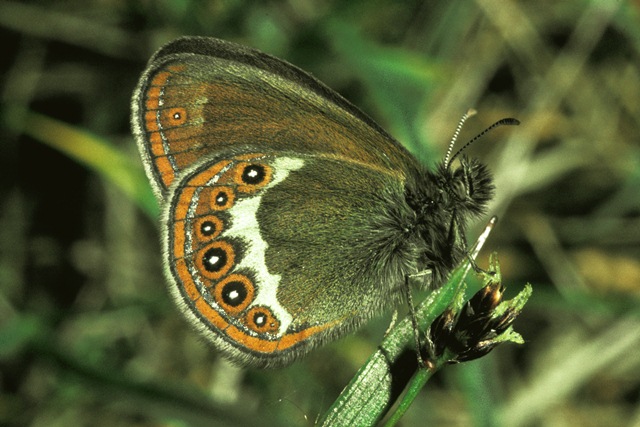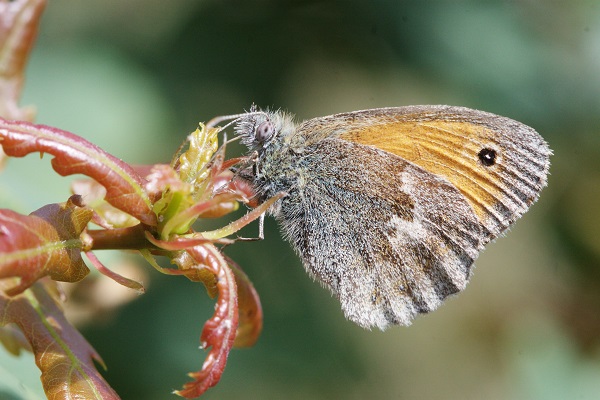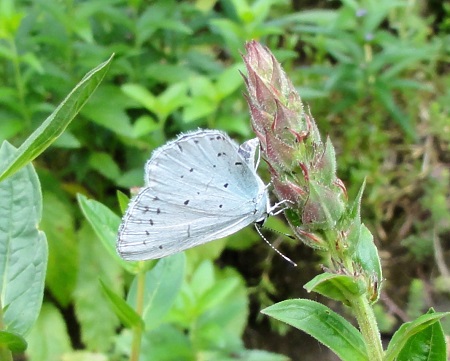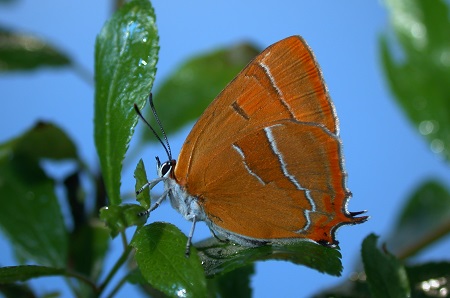|
12. Ecological profile
An ecological profile is a summary of the data about behaviour over time and in space, the ability to defend against threats and the way to obtain food. It is a collection of ecological data that produces an insight into why one species can survive in a particular landscape and another species cannot.
An ecological profile is to be considered as a tool box that contains the biological and ecological data which are necessary to answer ecological questions. Frequent questions are: how vulnerable is a species to threats and disturbances. Originally the ecological requirements of selected species were used as starting point in nature conservation and reserve management. In the Netherlands, however, attention has shifted to the characterisation of animal communities by summarising the ecological requirements of the different species within the community. The ecological profile of a single species should be applicable for generalization in such practical questions.
The system
The challenge is to construct a system that is multi-utilisable for different groups of species, such as butterflies, dragonflies, beetles, etc. Traits should be grouped to functional categories in such a way that it can be applicable for every taxonomic unit. The basic structure of trait arrangement is simplified to the four functions described previously (chapters 8-11):
1 behaviour over time, 2 behaviour in space, 3 defence against threads, 4 search for food.
In the case of butterflies 15 traits in total can be arranged in these four functions:
behaviour over time: 7 traits or subjects, most information obtained by breeding experiments,
behaviour in space: 4 traits on details of adult activities, most information by observation in nature,
defence against threats: 2 categories, biotic stress repulse or avoidance and physical stress defiance,
search for food: 2 categories, in adult stage and in larval stage.
The data can only be obtained by different methods thus cooperation between amateur and professional entomologists will be required in order to obtain as much biological and ecological information as possible.
How to utilise the profile
The profile can be used to determine the vulnerability of a species or alternatively its resistance to threats and disturbances. The figures should be also applicable in environmental questions. These can be related to features of the landscape scale, landscape heterogeneity and human land use, or more in detail spatial order on the scale of a nature reserves, wood edges, patterns of vegetation and interaction with other species. In all these questions the profile will be indicative for a measurement of the quality in the relation insect and environment. Thus the ecological profile should be able to show the reasons for the decline and what may be the bottleneck in a particular species.
|


|
Coenonympha hero. Photograph: Frits Bink ©.
The ecological profile of a particular species is basically the interpretation of the assembly of its traits and the ability to live in a certain type of environment.
There are species with all traits highly developed that seem to be able to live everywhere where others have most traits poorly developed.
The occurrence of these latter species is very restricted and they are, in most cases, declining in their European distribution.
They are classified as being endangered or already regionally extinct.
Their existence depends on special environmental factors. Knowing the ecological profile enables one to predict what factors make a species vulnerable or alternatively why it can be so robust as to live everywhere.
An example of a very endangered species in Europe is the scarce heath (Coenonympha hero) and an example of a widely occurring relative is the small heath (Coenonympha pamphilus).
The difference in their trait pattern exemplifies why the first is so vulnerable and the latter occurs very widely.
Coenonympha pamphilus. Photograph: Jeroen Voogd ©.
|
|
Characterisation
An easy method to characterise a species is after the way it searches for food. Among herbivores there are grass feeders, leaf eaters, fruit eaters, etc. From an ecological perspective species represent a series of food specialists on a protein content scale. Food rich in protein is usually scarce or only available for a short time; thus species that require such high protein food should possess other traits which enable to species to acquire it. These traits could be an ability to migrate and orientation capabilities or a lifecycle accurately adjusted to the timing of the availability of such food. An ecological profile can demonstrate the connection with other traits.
Scaling
Comparing the capabilities and weaknesses of a species requires a method to rate the expression of a trait or quality on a scale. For instance size as a parameter is easy to measure but nevertheless it is linked with several traits. It can be expressed by wing length and the distances from tip to base of the wing can produce a simple scale. An example is presented in table 12-1.
Table 12-1. Size of the butterfly expressed as wing length.
| Description |
wing length in mm |
examples |
| very small |
12 (10-13) |
Lulworth skipper, Small blue, Brown Argus |
| small |
16 (14-18) |
Large Skipper, Small Copper, Small Heath |
| medium |
22 (19-25) |
Small White, Small Tortoiseshell, Speckled Wood |
| large |
30 (24-36) |
Large White, Red Admiral, Silver-washed Fritillary |
| very large |
44 (37-50) |
Swallowtail, Purple Emperor, Monarch |
Paradox
The ecological profile demonstrates that there is a paradox in our perception of vulnerable and robust species. In protection and conservation ideas, vulnerability is correctly connected with risk of extinction. However the expectation is that species which occur sparse or very locally should have peculiar requirements to survive. Surprisingly the ecological profile of such species shows the opposite, they have no traits that are highly evolved and in ecological way they are not particular.
However, these species are a useful indication that the locality where they occur possesses particular qualities or that it has an unique history. On the other hand, a species having an ecological profile showing many highly developed traits is not interesting because such a species will find a home nearly everywhere.
This paradox is for the responsible people difficult to handle, the highly estimated species has no special traits, its vulnerability comes from the lack of it. Ecological studies about such kind of species will produce only vague figures, the study should concentrate on the edaphic and biotic details of the site and its surrounding landscape.
History and outlook
Half a century ago there were several approaches to characterize species after their ecological characteristics. Each species has its specialty and weakness in the struggle for life in environments dominated by biotic stress, physical stress or unpredictability in the occurrence of favorable episodes. Terms like ‘life history strategies’ became familiar in ecological studies. Species that are able to thrive under biotic stress by predators, parasites and competitors were qualified as ‘K strategists’, those that survived well under unpredictability as ‘r strategist’. The plant-ecologist Grime (1979) recognized the endurance of physical stress as a kind of specialization and labeled this as ‘stress tolerators’. He ordinated the different types of life history strategies in relationship with a stress factor in a triangle and named the three life history types ‘competitors’, ‘stress tolerators’ and ‘ruderals’.
All these proposals to characterize species in this way turned out to be of little use in practical questions. Therefore an attempt is made to develop a tool box filled with data that are applicable in studies according to the relationships between animal requirements and environmental qualities.
In this case of butterflies a frame for 15 features per species is created and what feature will be useful depends on the question posed in a particular situation. In the case of a nature reserve there are always questions related to processes such as management on soil fertility, water quality, vegetation succession and questions related with spatial planning of the landscape. In this cases information about behaviour over time and in space may be useful because the presence of a particular species can put light on a difficult question. In cases the relationship of a concerned species is discussed, information about relationship with other species of the local community and the required food will be highlighted, so defense against threats and search for food are the parts of the tool box where information can be found how a species works and what may be the bottlenecks.
However, the next question is how to fill this tool box. In table 12-2 the 15 features of butterflies are listed and also indicated how to get the information.
Table 12-2. Various ways of acquiring biological and ecological data.
Behaviour over time |
|
1 hibernation |
breeding experiments and observations in nature |
2 reproduction |
breeding experiments |
3 feeding periods |
breeding experiments |
4 generations |
breeding experiments and observations in nature |
5 spread |
breeding experiments and observations in nature |
6 developing per stage |
breeding experiments |
7 longevity butterfly |
breeding experiments |
|
|
Behaviour in space |
|
8 stay-at-home – migration |
observations in nature and experiments |
9 trace the mate |
observations in nature |
10 orientation |
observations in nature and experiments |
11 oviposition |
observations in nature and breeding experiments |
|
|
Defence again threats |
|
12 biotic stress |
observations in nature |
13 physical stress |
observations in nature and experiments |
|
|
| Search for food |
|
14 Adult |
observations in nature and experiments |
| 15 Larva |
observations in nature and experiments |
|
|
|





